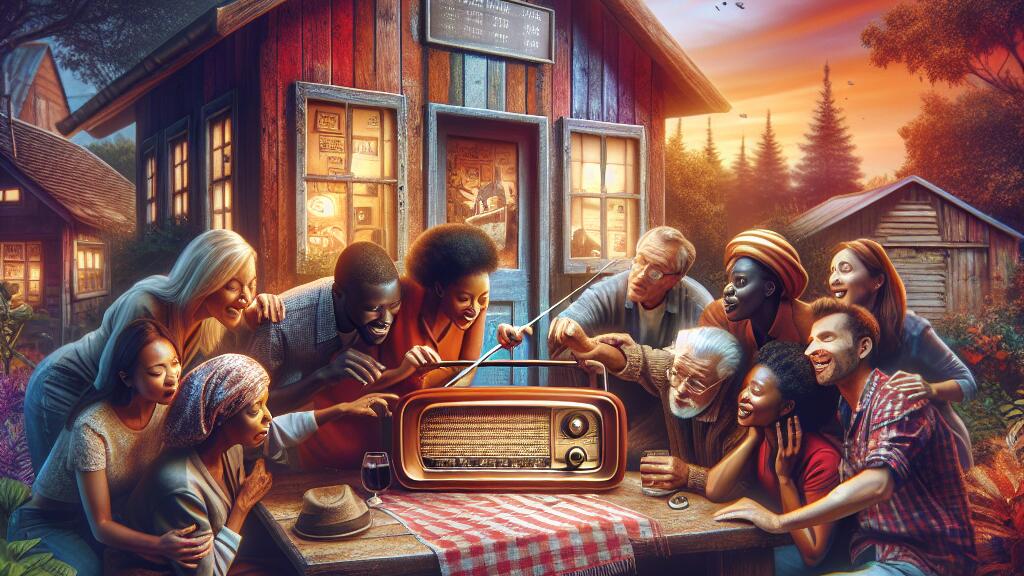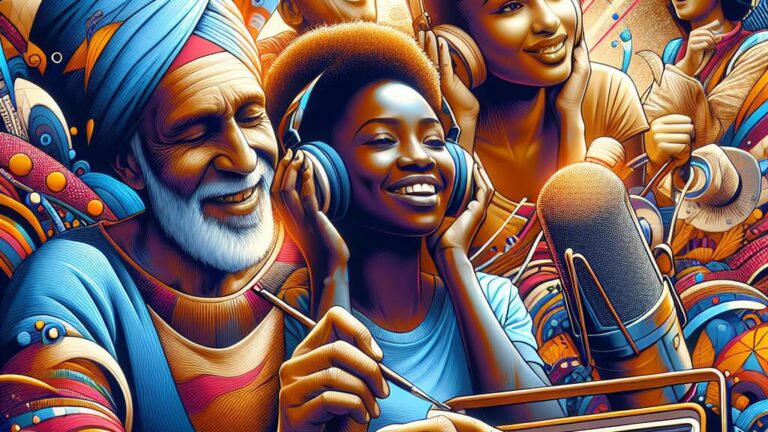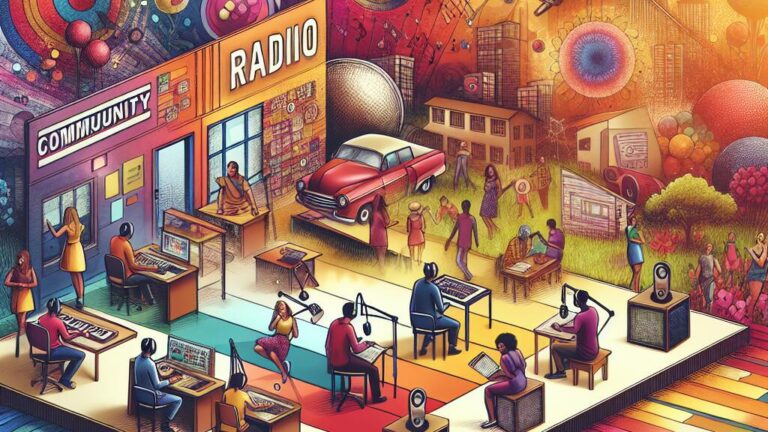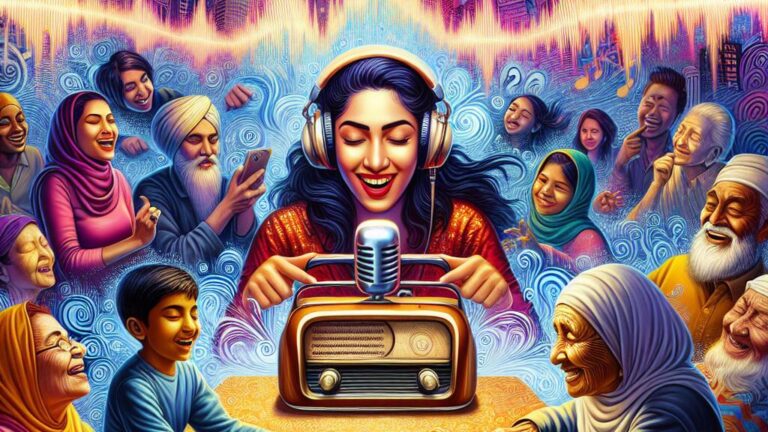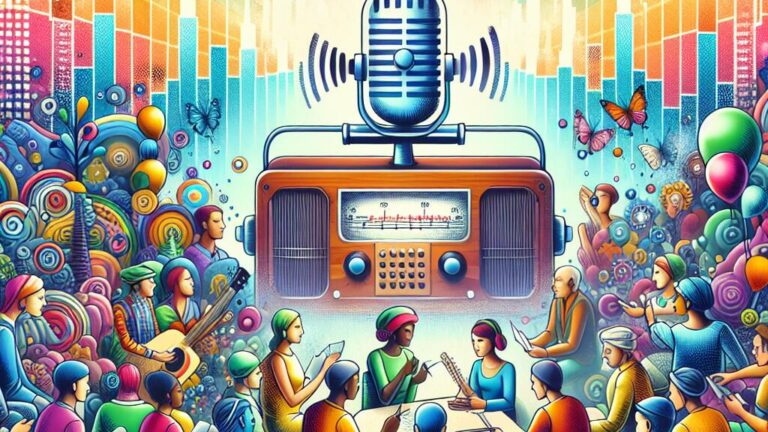What Makes a Great Music Show on Community Radio
Table Of Contents
Key Takeaways
- Traits of a Prosperous Community Radio Music Program
- Significance of Program Format in Increasing Listener Participation
- The Responsibility of Host in a Community Radio Music Program
- Using Viewer Input to Enhance Program Excellence
- Influence of a High-Quality Music Program on Community Radio
- Examples of Effective Community Radio Music Programs
Characteristics of a Successful Community Radio Music Show
Understanding the key elements that contribute to a successful community radio music show is crucial in creating engaging and memorable content for listeners. What Makes a Great Music Show on Community Radio involves a combination of factors such as music production, storytelling style, and listener connections. Matthew Lasar, in his book “Radio 2.0: Uploading the First Broadcast Medium,” notes the importance of pacing and scheduling to maintain listener interest. Incorporating bursts of streaming music along with thoughtful moderation and engaging guests can help keep the show dynamic. Furthermore, utilizing social media channels and listener feedback for improvement is essential for creating a show that resonates with the community. Experimenting with different content strategies while ensuring inclusivity and diversity in music selection is key to the success of any community radio music show.
Understanding Community Radio Audience
To craft a successful music show on community radio, understanding the audience is paramount. The listeners tuning in to community radio programs are not numbers; they are human beings with unique tastes and preferences. Whether it’s the college student seeking new indie bands, the art enthusiast craving eclectic sounds, or the cultural aficionado yearning for Asian pop songs, community radio serves as a platform that caters to a diverse audience base. By delving into the rich history of community radio and acknowledging the audience’s thirst for specialty music programming, broadcasters can make programming decisions that resonate with their listeners. In this way, community radio can provide a platform for artists, bands, and sounds that may potentially be overlooked by more mainstream station conglomerates.
Diversity in Music Selection
Diversity in music selection is a key aspect of “What Makes a Great Music Show on Community Radio.” Kate, a radio presenter, uses social media platforms like Pinterest for inspiration when preparing her show. Her careful choices reflect the changing tastes influenced by lockdown habits, as seen in the rise of new genres like folkadelia food. The playlists she curates tell a rich story through music, with each title well thought out to capture her audience’s attention while sparking discussions. Kate’s dedication to her show and her presenter skills shine through in the unique combination of interviews, comedy, and news content she brings to the airwaves.
In the world of community radio, ensuring a diverse range of performers and audio sources is crucial for a successful show. Deejays like Kate plan their content meticulously, drawing on a variety of media entities and interviews to keep their audience engaged. With broadcasting confidence and training from consortiums like WRtu, deejays like Kate navigate the complexities of copyright and broadcasting rights with ease. By providing a space for a mix of music genres and fostering a sense of community through their shows, deejays like Kate create a vibrant radio station that keeps listeners coming back for more.
- Incorporating a variety of music genres helps keep the audience engaged
- Drawing on multiple media sources adds depth and richness to the show
- Including interviews with performers enhances the connection with listeners
- Creating playlists that tell a story through music increases audience interest
- Fostering a sense of community through radio shows contributes to listener loyalty
Importance of Show Structure in Enhancing Listener Engagement
Enhancing listener engagement relies heavily on the structured format of a community radio music show. What makes a great music show on community radio is a well-thought-out show structure that keeps audiences tuned in. By carefully planning and executing the show’s elements – from the opening segment to effective segment planning and ensuring a smooth flow between segments – the community radio DJ plays a pivotal role in captivating the audience’s attention. Advertisers are always on the lookout for shows with high audience engagement, making the show’s structure a crucial element in attracting potential sponsors. A well-structured show not only keeps listeners hooked but also provides a launchpad for interaction and feedback, fostering a sense of community among the audience. By understanding the importance of show structure, community radio DJs can elevate their shows to new heights and strengthen the bond between the show and its listeners.
Effective Segment Planning
Understanding the needs and preferences of your audience is crucial in effective segment planning for a community radio music show. Conduct interviews, interact with listeners, and compare the brand with other radio shows to create content that resonates with diverse groups. Engage with the community through blog contact, social media, or in-person touchpoints to gather feedback and requests that can be integrated into your program. By involving audience, hosts, and panelists, you can prep the show with music variations, timely questions, and interactive segments that keep the listeners hooked from start to finish.
To create a successful segment, consider the value of each interaction and the mood you wish to set for your audience. Build a playlist that reflects different genres and appeals to a broad spectrum of listeners. Implement tips shared at NFBC conferences or by radio broadcasters to shift seamlessly between music points, awards, and speech teams. Maintain the enthusiasm and energy of the show by involving individuals or groups within the community. By keeping the program fun, engaging, and true to the roots of community radio, you can increase listener involvement and create a show that stands out in the radio broadcasting landscape.
Ensuring Smooth Flow Between Segments
An essential aspect of a top-notch community radio music show is maintaining a seamless transition between segments. Understanding “What Makes a Great Music Show on Community Radio” is vital. Whether introducing guest speakers, weaving in ads with finesse, or ensuring safe harbor compliance, like a football coach strategizing plays, each segment should flow effortlessly into the next. The show should resemble a well-structured sitemap xml, guiding listeners through an auditory journey. Just like a skilled musician blends notes harmoniously, a successful host should smoothly segue from heavy metal to house, improv to indie, and jazz to jungle. By ensuring the flow feels liquid, the listeners are more likely to stay engaged and active in the show’s direction.
In the realm of community radio, listener participation plays a crucial role in keeping the show alive and vibrant. To enhance this engagement, maintaining a seamless flow between segments is key. Much like a drama unfolding, each transition should be orchestrated with precision. By valuing listeners’ contributions as stations’ importance, a dynamic show can be created. Suggestions from listeners add layers to the show, like introducing new characters in a college radio drama. From postpunk to celtic, the host should navigate through selections, much like a product tour overview, to make the community radio music program shine. Just as a football coach relies on a star player, a host must rely on listener feedback to make the show’s output volume resonate. Carefully nurturing listener relationships, through a smooth transition, is the essence of making a community radio music show truly stand out.
The Role of Host in a Community Radio Music Show
When considering the vital role of a host in a community radio music show, it is crucial to understand that they act as a bridge between the music being played and the listeners tuning in. A great host can nurture a strong relationship with the audience through engaging storytelling, creating a sense of familiarity, and providing a platform for listener participation. By incorporating elements such as effective segment planning, where the host structures the show to provide a cohesive listening experience, the host can enhance listener engagement and keep them tuned in. This approach allows the host to focus on the dual functionalities of presenting music and maintaining a narrative that captures the essence of the show. In essence, what makes a great music show on community radio is a host who can charm the audience with their approach, creating a show that becomes a hub for both music enthusiasts and casual listeners alike.
| Host | Engaging Storytelling | Listener Interaction | Segment Planning |
|---|---|---|---|
| Alice | ✓ | ✓ | ✓ |
| Bob | ✓ | ✓ | ✓ |
| Charlie | ✓ | ✓ | ✓ |
Host as a Bridge Between Music and Listeners
The role of a host in a community radio music show is crucial in acting as a bridge between the music being played and the audience listening in. A great music show on community radio thrives on the talent and content the host brings into each segment. The host’s responsibility extends to crafting compelling talking points, selecting tracks that resonate with the audience, and fostering a bond with listeners. By incorporating insider techniques and interventions, the host helps in the smooth continuation of radio broadcasts. Another aspect is the presence of authenticity in the host’s voice and interactions, highlighting the importance of building a strong connection with the community through niche content and thoughtful engagement.
In addition to all the technical aspects involved, the host also plays a pivotal role in cultivating a sense of belonging and inclusion among listeners tuning in to the show. Through engaging segments and insightful commentary, the host navigates the show with an urgency that keeps the audience captivated and eagerly waiting for what comes next. By incorporating listener feedback into the routine of the show, the host demonstrates an understanding of the community’s preferences and adapts the content accordingly. Establishing a personal touch and being the voice behind the music creates a unique bond that transcends the airwaves, making the host a key figure in the success of a community radio music show.
Nurturing AudienceHost Relationship
To nurture the audience-host relationship in a community radio music show, it is crucial to understand what makes a great music show on community radio. A radio DJ or host can analyze radio show data, listener feedback, and listener statistics to determine the elements that resonate with the audience. By incorporating these factors into the show, such as playing a mix of rock songs, alternative tracks, niche shows, and legendary artists like Cocker or English, the host can create a loyal listener base. Additionally, utilizing music scheduling software can aid in creating a seamless flow between songs and segments, enhancing the overall listening experience for all listeners.
In community radio, fostering a strong relationship between the audience and the host is an avenue to success. Building loyalty through engaging features like interviews, special edition newsletters, and user-friendly radio websites can enhance listener engagement. By taking inspiration from successful programs and training in radio specialist skills, hosts like Lisa Lampanelli can offer quality content that resonates with listeners. Through effective communication channels like blogs and listener feedback mechanisms, hosts can tailor their shows to cater to listener tastes, thus increasing audience interaction and overall show greatness.
Utilizing Listener Feedback to Improve Show Quality
Understanding what makes a great music show on community radio is essential for broadcasters looking to enhance their listener engagement. By incorporating listener feedback, show hosts can tailor their content to better cater to the preferences of their audience. Marc Hand, a broadcast assistant at The University of San Francisco, emphasizes the significance of audience participation in radio shows, highlighting the virtues of utilizing community resources to improve the overall quality of broadcasts. By letting community radio listeners voice their thoughts and suggestions, hosts like Marc Hand can make informed decisions on show settings, music genres, transitions, and delivery styles. This level of personalization not only fosters a strong connection between the host and listeners but also helps in showcasing the strengths and uniqueness of each show. By implementing feedback received through various platforms such as emails, comments, and social media, broadcasters can adapt and fine-tune their content to ensure a successful advocacy for community radio.
| Listener Name | Feedback Type | Recommendation |
|---|---|---|
| Emily S. | More diverse music selection | |
| Sam L. | Social Media | Engage in more interviews with local artists |
| Alex M. | Comment | Improve audio quality during transitions |
| Grace W. | Include more information about upcoming community events |
Methods to Gather Listener Feedback
To effectively gather listener feedback for your community radio music show, there are various strategies you can employ. Firstly, actively encourage audience participation during your show by prompting listeners to call in or engage via social media platforms such as Instagram or LinkedIn. By creating a welcoming environment that values listener opinions, you can gain valuable insights into their preferences, likes, and dislikes. Additionally, consider setting up a dedicated feedback section on your show’s website where users can provide detailed comments and suggestions. Utilizing user consent tools, such as cookie policies and privacy statements, can help build trust and credibility with your audience. By implementing these methods, you can gather crucial data to tailor your radio content music targeting, ensuring that your show resonates with your community.
When it comes to gathering listener feedback for your community radio music show in Belgrade, MT 59714, engaging with your audience is key. Asking for input during the show, whether through calls, messages, or social media interactions like tweets and Instagram comments, can provide valuable insights into what makes a great music show on community radio. Furthermore, considering listeners’ perspectives on various aspects of the show, such as the choice of tunes, the flow of segments, or the overall sound quality, can help you make informed decisions to enhance the listener experience. By actively seeking feedback, you can create a more engaging and interactive community radio show that resonates with your audience and drives listener retention.
Implementing Feedback for Show Improvement
Effective utilization of listener feedback is crucial in enhancing the quality of a community radio music show. Implementing feedback not only fine-tunes the show but also fosters a sense of connection between the host and the audience. By integrating suggestions and preferences gathered from listeners, hosts can tailor their content to cater to the unique tastes and interests of their community. This proactive approach ensures that the show remains dynamic and relevant, making it a staple in the station’s program listing.
Taking into account “What Makes a Great Music Show on Community Radio,” it is essential to establish a structured policy for handling feedback. Whether it’s through direct messages, emails, or social media interactions, every listener input should be acknowledged and evaluated. By categorizing feedback based on its relevance and impact, hosts can prioritize those that hold the most potential for show improvement. This systematic approach allows for continuous growth and refinement, helping the host and the station management gain valuable radio insights that can elevate the overall listening experience for the audience.
Impact of a WellProduced Music Show on Community Radio
What Makes a Great Music Show on Community Radio can be determined by various factors that contribute to its impact on the audience. Tips for enhancing the level of engagement include creating memorable moments through effective segment planning and ensuring a smooth flow between segments. The role of the host is crucial in fostering a connection with listeners, acting as a bridge between the music played and the audience. By utilizing listener feedback effectively, a well-produced music show can continuously improve its quality and maintain listener interest. The existence of successful community radio music shows like KUSF and Radio Survivor’s WordPress serves as a record that showcases the positive impact of such programming. Despite commercial stations dominating the airwaves, community radio has the unique ability to spread diverse voices and genres that may not be catered to by mainstream media. An example of this can be seen in the celebration of music shows at the University of California at Santa Cruz, where drawbacks such as limited bandwidth are overcome by the passion and dedication of the presenters. Overall, the success of a community radio music show lies in its ability to connect with the audience, share experiences, and provide a platform for diverse voices to be heard.
Boosting Listener Numbers
In the quest to increase listener numbers for a community radio music show, several factors play a vital role. Firstly, understanding the pulse of the audience is key. This involves grasping their preferences, the diversity in music selections that appeal to them, and the importance of targeting programs to specific neighborhoods or cultural groups. By comprehending “What Makes a Great Music Show on Community Radio,” hosts can tailor their content to resonate with listeners, capitalizing on their passion for music and creating a loyal fan base. Funding is also a critical aspect, as it enables the show to enhance its production quality, technology, and overall impact, attracting more listeners in the process.
Moreover, community radio music shows can boost listener numbers by tapping into various promotional strategies. Utilizing social media platforms, radio websites, or even radio mobile apps can broaden the show’s reach, making it accessible to a wider audience. Furthermore, targeting mainstream content or collaborating with popular music magazines can generate buzz and anticipation, drawing more listeners in. By employing effective fundraising strategies and engaging in partnerships with local businesses or artists, the show can not only elevate its visibility but also forge stronger connections within the community, ultimately leading to an increase in listener numbers.
Fostering Community Engagement and Participation
To foster community engagement and participation in a community radio music show, it is crucial to understand What Makes a Great Music Show on Community Radio. One common advantage is having a diverse music cd library that aligns with the station’s music policies. By broadcasting a wide range of genres, including world music and electronica, you cater to a broader audience, enhancing the listening experience. Engaging with listeners through emails, messages, and on-air dialogue ensures a personal connection, making them feel valued. Another key thing is to involve community broadcasters, presenters, and show hosts in the decision-making process, encouraging a sense of ownership and pride in the show. Hosting events, tours, and workshops not only educates the community about the station but also promotes a sense of belonging and unity.
For community radio stations aiming to enhance community engagement and participation, having a solid workflow is essential. From managing email addresses to creating engaging content, every aspect of broadcasting must be organized. Training programs for community broadcasters, presenters, and show hosts are key in maintaining a high-quality standard and ensuring compliance with FCC regulations. By offering tutorials and radio training podcasts, station managers can nurture talent and refine broadcasting skills. Community engagement events, such as book demos and station tours, provide opportunities for listeners to connect with station personnel and understand the ideologies behind the shows. Encouraging college radio college station collaborations, especially with universities and FM stations, can broaden the station’s reach and appeal. By keeping the community involved in the station’s activities and decision-making processes, you can create a vibrant and inclusive broadcasting medium that resonates with the local area.
Case Studies of Successful Community Radio Music Shows
One example of What Makes a Great Music Show on Community Radio is demonstrated by the case study of KPFA-FM’s show hosted by Doug Wendt. This show is a stellar example of how community radio djs can infuse music programming with elements of deep-rooted soul and acid folk arts. Wendt bridges the gap between musicians and listeners by curating a dynamic playlist that includes a mix of classic rock, soul, and roots reggae, fostering community engagement and participation. The show’s structure, nurtured by input from the audience, guest musicians, and poets, ensures smooth transitions between segments and a cohesive station sound. Wendt’s ability to incorporate listener feedback, industry reports, and updates into his show exemplifies the benefits of community radio training and knowledge-sharing. By fostering audience interactions through phone-ins, email, and member login activities, Wendt’s show creates a sense of community among listeners, volunteers, and station staff.
- Incorporating elements of deep-rooted soul and acid folk arts into the music programming
- Curating a dynamic playlist with classic rock, soul, and roots reggae
- Engaging listeners through guest musicians and poets
- Utilizing input from the audience for smooth transitions between segments
- Incorporating listener feedback, industry reports, and updates into the show
- Fostering community engagement through phone-ins, email, and member login activities
- Creating a sense of community among listeners, volunteers, and station staff
Analysis of Successful Community Radio Shows
What Makes a Great Music Show on Community Radio involves a delicate interplay between various elements. A successful show on the radio goes beyond just playing music; it’s about creating a cohesive and engaging experience for listeners. According to radio survivor bulletin, the power of storytelling techniques and the timing of segments can make or break a show. Broadcasting partner, such as Stitcher, emphasizes the importance of understanding audience preferences and adapting the content accordingly. By following radio guidelines and utilizing feedback from the audience, hosts can effectively tailor their shows to keep listeners coming back for more.
In the world of community radio, individual presenters are the heart and soul of a successful music show. Duane Bradley highlights the significance of building a connection with the audience through engaging conversations and relatable content. Hosting a music radio show involves more than just pressing play; it requires a deep understanding of the medium and the ability to weave together a seamless blend of music, talk radio segments, and guest interviews. By embracing the motions of radio recognition, presenters can carve out a niche within the radio landscape and attract a dedicated following.
Lessons from Highly Rated Music Shows
When it comes to understanding what makes a great music show on community radio, there are a few key lessons we can learn from highly rated music programs. First and foremost, the breath of genres featured in the show plays a significant role in attracting and retaining listeners. It’s essential to update the music selection regularly to keep the audience engaged and showcase the flexibility in the show’s music choices. Additionally, investing in radio station equipment and utilizing apps like Android can enhance the production work, making the show stand out among the crowd. By consistently delivering high-quality content with professionalism, the show can pride itself on engaging its audience and boosting listener numbers.
Another crucial aspect learned from successful music shows is the importance of listener feedback and participation. By actively seeking input from the audience through social media polls, presentations, and radio news, the show can adapt and improve based on what the listeners enjoy. This level of engagement not only builds a loyal listener base but also creates a community around the show. Incorporating feedback on the music selection, show structure, and overall presentation can significantly impact the bottom line of the show by increasing audience size and participation.
Conclusion
The heart of a successful community radio music show lies in its ability to connect deeply with the audience, celebrating the diversity of musical genres and fostering a sense of belonging among listeners. By understanding the community radio audience and curating a diverse music selection, music programmers can enhance listener engagement and create a show that resonates with the community. Effective segment planning and ensuring smooth flow between segments are crucial in maintaining listener interest and participation. The role of the host as a bridge between music and listeners cannot be overstated, as they nurture the audience-host relationship and elevate the overall listening experience. By utilizing listener feedback to continuously improve the show quality, community radio music shows can make a lasting impact on their audience, boosting listener numbers and fostering community engagement. Through case studies of successful community radio music shows, valuable lessons can be learned to further enhance the spirit and impact of these shows.
FAQS
What are the key characteristics of a successful community radio music show?
A successful community radio music show typically exhibits diversity in music selection, effective show structure, engaging segment planning, and a strong host-listener relationship.
How important is understanding the community radio audience for a music show?
Understanding the community radio audience is crucial as it helps in tailoring the music selection and show format to meet the preferences and interests of the listeners.
How can a host enhance listener engagement in a community radio music show?
A host can enhance listener engagement by actively interacting with the audience, incorporating listener feedback, and creating a welcoming and inclusive environment on the show.
What role does listener feedback play in improving the quality of a community radio music show?
Listener feedback is invaluable in improving the quality of a community radio music show as it provides insights into the preferences and opinions of the audience, helping in making relevant adjustments to the show.
How can a well-produced music show on community radio contribute to community engagement and participation?
A well-produced music show on community radio can boost listener numbers, foster community engagement, and encourage participation by creating a platform for local talent, promoting community events, and providing a space for community dialogue and interaction.
